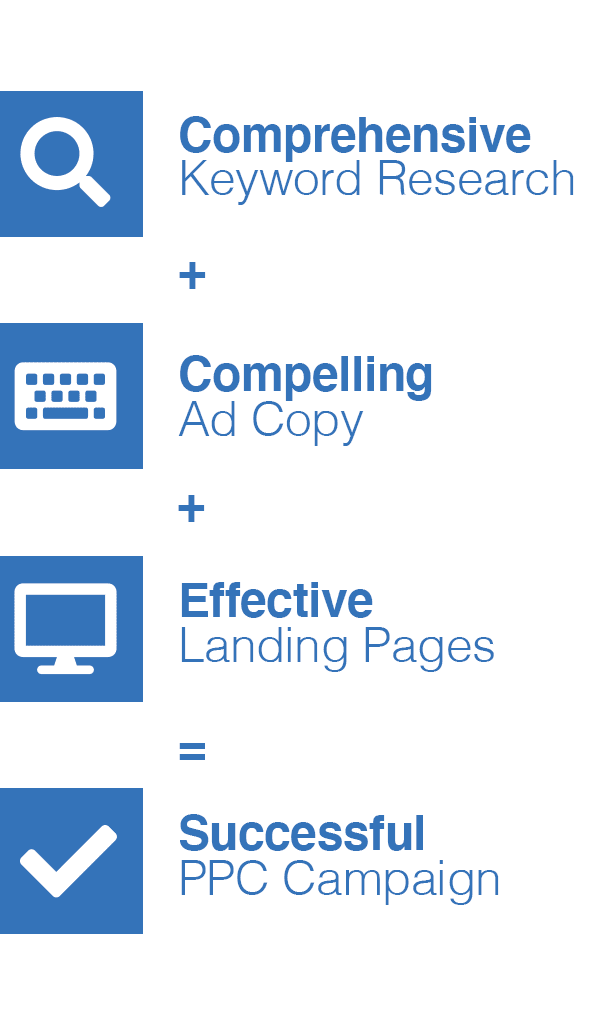© 2022 TouchStone Digital. All Rights Reserved. Privacy Policy. Careers.
by Evyn Stevens, Digital Marketing Coordinator

Here’s a step-by-step process to help you get started with an effective pay-per-click (PPC) ad campaign.
Conducting thorough keyword research is essential to the foundation of your PPC campaign. That means narrowing your list of keywords to terms relevant to your business, products and services. That will help your ads place in relevant search results pages.
Setting the relevancy of keywords within campaigns allows you to filter the use of each term and optimize your budget.
There are three types of relevancy searches:
Broad match: Triggers your ad if the search result has your keyword
Phrase match: Triggers your ad if the search result is a variation of your keyword
Exact match: Triggers your ad only if the search result matches word for word
You may also consider a keyword gap analysis during your research. That process provides insight into your PPC campaign’s successes and shortcomings and compares them to those of your competitors.
The most effective PPC campaigns organize researched keywords into groups. That de-clutters your account and improves your strategies by allowing you to create:
Applying negative keywords to your campaign will filter unwanted clicks. You supply Google with terms you don’t want to trigger your ad by setting those negative keywords.
One of the most influential factors that affects PPC ad conversions is the ad copy.
Google and other platforms give you limited space to write a compelling digital advertisement.

Here are some best practices to maximize your PPC copy:
A landing page is an extension of your website that’s intended to convert ad campaigns into leads.
Advantages of landing pages include:
Higher quality score: This online stat measures the relevance of your keywords compared to your landing page. A high quality score boosts your ad’s rank on search engine results pages (SERP).
Lower pay-per-click: Your quality score can also determine how much you’re paying per click on your ads. Depending on the competition for your keyword, a high quality score could mean a cheaper cost per click and vice versa.
Optimized landing pages should have:
Maximizing keyword research is an essential part of an effective digital marketing strategy. The team at TouchStone Digital can help you define your plan. Contact us online or call 419-299-9000 to schedule a meeting.
Share article
© 2022 TouchStone Digital. All Rights Reserved. Privacy Policy. Careers.